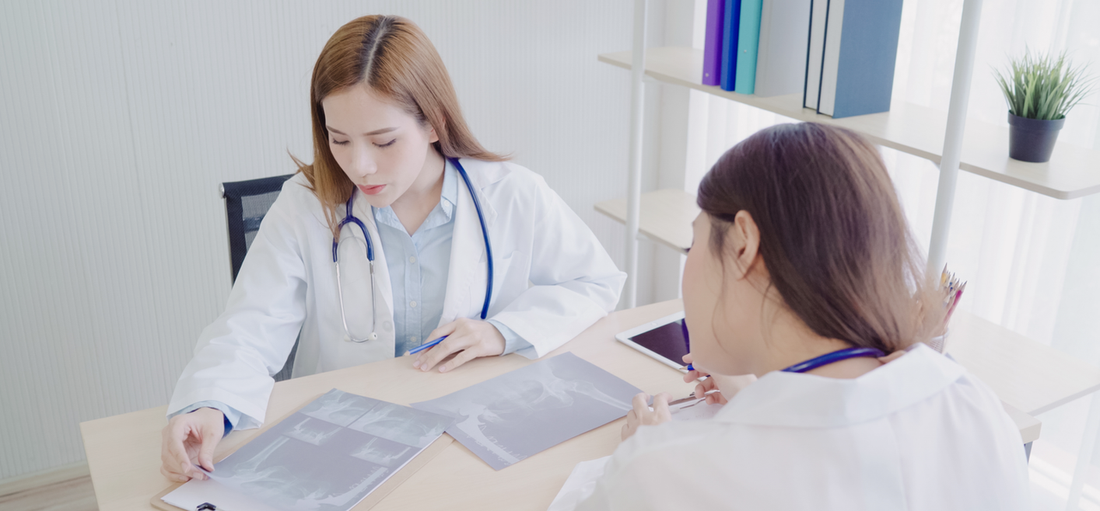Chronic pelvic pain in women is a persistent discomfort or pain in the lower abdomen or pelvis lasting six months or more. It affects millions of women worldwide and can significantly impact quality of life. Hormonal fluctuations play a critical role in the development and exacerbation of CPP, making it essential to understand these influences and the treatment options available.
Understanding Chronic Pelvic Pain in Women
Common Causes:
-
Gynecological Conditions: Endometriosis, adenomyosis, pelvic inflammatory disease (PID), ovarian cysts, and fibroids.
-
Urological Issues: Interstitial cystitis (IC) and recurrent urinary tract infections (UTIs).
-
Gastrointestinal Disorders: Irritable bowel syndrome (IBS) and chronic constipation.
-
Musculoskeletal Problems: Pelvic floor dysfunction and myofascial pain.
-
Neurological Factors: Nerve entrapment and neuropathic pain.
-
Psychological Aspects: Chronic stress, depression, and anxiety.
Hormonal Influences on CPP
Hormonal fluctuations can significantly impact the severity and frequency of chronic pelvic pain. Key hormones involved include estrogen and progesterone, which fluctuate during the menstrual cycle and reproductive events such as pregnancy and menopause.
1. Menstrual Cycle:
-
Estrogen and Progesterone: Fluctuations in these hormones can lead to pain exacerbation. For instance, endometriosis-related pain often worsens during menstruation due to changes in hormone levels.
2. Pregnancy:
-
Hormonal Changes: During pregnancy, elevated levels of estrogen and progesterone can lead to ligamentous laxity and increased strain on the pelvic floor, contributing to pain.
3. Menopause:
-
Declining Estrogen Levels: Reduced estrogen during menopause can lead to atrophic changes in the pelvic tissues, increasing susceptibility to pain and discomfort.
Treatments for Hormonal Influences on CPP
Conventional Treatments:
1. Hormonal Therapies:
-
Oral Contraceptives: Help regulate menstrual cycles and reduce endometriosis-related pain.
-
Gonadotropin-Releasing Hormone (GnRH) Agonists: Suppress ovarian hormone production, reducing pain from conditions like endometriosis.
-
Progestin Therapy: Reduces menstrual flow and alleviates pain by thinning the endometrial lining.
2. Pain Management:
-
Nonsteroidal Anti-Inflammatory Drugs (NSAIDs): Help manage pain and inflammation.
-
Analgesics: Used for pain relief during acute pain episodes.
-
Antidepressants and Anticonvulsants: These medications can be effective in managing neuropathic pain.
3. Physical Therapy:
-
Pelvic Floor Rehabilitation: Strengthening and relaxing pelvic floor muscles to reduce pain.
-
Manual Therapy: Techniques such as myofascial release and trigger point therapy to alleviate musculoskeletal pain.
-
Postural Training: Improving posture to reduce strain on pelvic muscles.
4. Surgical Options:
-
Laparoscopy: For diagnosing and treating endometriosis or adhesions.
-
Hysterectomy: In severe cases of fibroids or adenomyosis when other treatments fail.
Alternative Treatments:
1. Acupuncture:
-
Pain Relief: Stimulating specific points on the body to alleviate pain.
2. Herbal Supplements:
-
Anti-Inflammatory Herbs: Such as turmeric and ginger to reduce inflammation and pain.
3. Lifestyle Modifications:
-
Dietary Changes: Anti-inflammatory diet to reduce pain.
-
Exercise: Regular physical activity to improve overall health and reduce pain.
-
Stress Management: Techniques like yoga and meditation to manage stress and reduce pain perception.
4. Psychological Therapies:
-
Cognitive Behavioral Therapy (CBT): Helps manage pain by changing negative thought patterns.
-
Biofeedback: Teaches control over physiological functions to reduce pain.
Patient Outcomes and Success Stories
Case Study 1:
A 32-year-old woman with severe endometriosis-related CPP was treated with a combination of GnRH agonists and pelvic floor physical therapy. After six months, she reported significant pain reduction and improved quality of life, with fewer pain episodes and increased physical activity.
Case Study 2:
A 45-year-old postmenopausal woman with CPP related to estrogen deficiency was treated with local estrogen therapy and physical therapy focusing on pelvic floor strengthening. She experienced substantial relief from pain and improved bladder function.
Integrating Treatments for Optimal Care
Collaborative Approach:
Managing CPP often requires a multidisciplinary approach involving gynecologists, urologists, physical therapists, pain specialists, and mental health professionals. This collaboration ensures comprehensive care tailored to the patient's specific needs.
Regular Follow-Up:
Ongoing assessment and adjustment of treatment plans are crucial for managing CPP effectively. Regular follow-up appointments help monitor progress, address any new symptoms, and refine treatment strategies.
Chronic pelvic pain in women is a multifactorial condition significantly influenced by hormonal changes. Understanding these hormonal influences and exploring a range of treatments—from hormonal therapies and pain management to alternative therapies and lifestyle modifications—can help manage CPP effectively. A comprehensive, multidisciplinary approach is essential for improving patient outcomes and enhancing quality of life.




